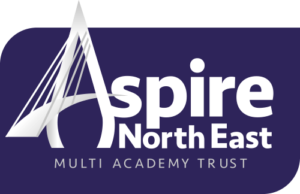Visual Arts (Art, Photography & Graphics) Curriculum Overview
Aim
Art and design must be presented as an education of value relevant to the outside world and personal development and not merely a recreational activity. We nurture the growth of developing minds by providing opportunities to explore, invent, express, dream, reflect, and communicate in a stimulating environment that fosters critical thinking and celebrates diversity. Our Academy values and supports the arts for both their uniqueness and their integral role in the education of all children, supporting high achievers equally alongside disadvantaged and vulnerable pupils. We believe that art can play an exciting and leading role in providing dynamic focus for the educational experience our learners within the Academy.
It is vital that the Art and Photography Department develop relevant courses which are structured and provide a logical and challenging progression, ensure entitlement yet still allow for a one-off project. Units of work must offer knowledge, skills, techniques, expertise in handling equipment and materials but also develop powers of discrimination, initiative, investigation, organisation and self-awareness. These skills and qualities can only be developed through units of work in which the pupils are engaged, inspired and enthusiastic. Pupils must have a sense of enjoyment, satisfaction, pride in their achievements and efforts whatever their individual ability level.
The arts enrich the quality of our experiences, providing rewarding activities that inspire, enrich, inform, stimulate, challenge and engage. Art activities help develop the capacity to formulate and communicate ideas and feelings; they enhance perceptual skills through responding, developing and evaluating, and physical skills through control and use of movement. Involvement in the arts helps to foster a positive attitude among students by developing a wide range of qualities such as cooperation, enthusiasm, passion, inspiration, tenacity and ambition. We also emphasise that this is an inclusive involvement, which helps students acquire an important sense of belonging as well as building the self-confidence they need to do well and make their first steps towards studying GCSE and A level endorsements in Fine Art and Photography, possibly leading to higher education and employment.
The staff in the department believe through our lessons every week with KS3 students lay6 the foundation in which the basic visual language, concepts, materials, skills and methods of working are developed. More complex and individual responses occur in KS4 following the AQA endorsements in Fine Art, Photography and Graphic Communication.
Intent
The Art Department should be a stimulating and exciting environment to work in. It is used for lunchtime clubs and extra-curricular activities and should be a vibrant centre of activity. Display within the Department reflects work of all ability levels and age ranges. Work is carefully mounted and exhibited as it is often used as a teaching aid and seen as a way of encouraging and enriching pupils in the classroom. Displays must reflect a sense of value, quality and care for the work of all pupils. Work of comparatively poorer quality and finish should be displayed if it reflects enthusiasm, effort and understanding.
The rooms within the Department should have easy access to resources, stimulus material, objects, photographs, posters, books, reproductions etc. These elements heighten the student’s awareness of the visual language we are trying to develop and draw attention to the links between work done in class and the environment that exists outside.
It is the responsibility of each teacher to organise space and materials of the room in a manner that encourages a sense of respect and order. Materials and equipment must be accessible and arranged to ensure an efficient, happy and pleasant working environment within the classroom. Pupils are encouraged to respect the materials and the environment they work in as a way of building a sense of responsibility towards themselves and others.
We believe the working atmosphere in the classroom should be serious, purposeful and focused. Quiet work is encouraged during appropriate tasks in order to allow pupils to concentrate. Activity and movement in the classroom must have a purpose to help create a safe learning environment.
Sequence and structure
Our curriculum is split in to Key Stage 3 (years 7, 8 and 9) and Key Stage 4 (years 10 and 11).
Year 7 KS3 Curriculum
Year 8 KS3 Curriculum
Year 9 KS3 Curriculum
Year 10 KS4 Curriculum
Year 11 KS4 Curriculum
KS5 Curriculum
How does our Curriculum cater for students with SEND?
Art:
Teacher is aware of pupil passports link to individuals in their class and adapt learning to suit the student’s needs. Techniques that are commonly used within Art based lessons are, chucking of tasks, checklists for students to tick off their achievements (see in success criteria sheets and assessment sheets), verbal feedback is given consistently and if needed to re-enforce is written on assessment sheet or next to students work. Students are given the opportunity to ‘think, pair, share’ before being asked a question in front of the class, group work supports these students. Praise and encouragement are regularly given. Lessons follow the same routine and structure of Connect, Content and Consolidate. Students learn the ‘bigger picture’ of each task through ‘Know more, do more, go further’. Gallery walks build confidence with oracy tasks and link directly to the success criteria of the lesson.
Photography & Graphics:
Teacher is aware of pupil passports link to individuals in their class and adapt learning to suit the student’s needs. Techniques that are commonly used within Photography based lessons are, chucking of tasks, checklists for students to tick off their achievements (see in success criteria sheets and assessment sheets), verbal feedback is given consistently and in written form as a digital comment. Students are given the opportunity to ‘think, pair, share’ before being asked a question in front of the class, group work supports these students. Praise and encouragement are regularly given. Lessons follow the same routine and structure of Connect, Content and Consolidate. Students learn the ‘bigger picture’ of each task through ‘Know more, do more, go further’. Gallery walks build confidence with oracy tasks and link directly to the success criteria of the lesson.
How does our curriculum cater for disadvantaged students and those from minority groups?
As a school serving an area with high levels of deprivation, we work tirelessly to raise the attainment for all students and to close any gaps that exist due to social contexts. The deliberate allocation of funding and resources has ensured that attainment gaps are closing in our drive to ensure that all pupils are equally successful when they leave the Academy.
How do we make sure that our curriculum is implemented effectively?
- The curriculum leader is responsible for designing the Art and Design curriculum and monitoring implementation.
- The subject leader’s monitoring is validated by senior leaders.
- Staff have regular access to professional development/training to ensure that curriculum requirements are met.
- Effective assessment informs staff about areas in which interventions are required. These interventions are delivered during curriculum time to enhance pupils’ capacity to access the full curriculum.
- Curriculum resources are selected carefully and reviewed regularly.
- Assessments are designed thoughtfully to assess student progress and inform future learning and progression.
- Work scrutiny is carried out within departments to check consistency of marking and feedback.
- Analysis of pupil progress through use of SISRA to identify gaps in pupil progress / Target groups.
How do we make sure our curriculum is having the desired impact?
- Examination results analysis and evaluation
- Termly assessments-analysis and evaluation meetings
- Lesson observations
- Learning walks
- Work Journal / Sketchbook / artwork scrutiny
- Regular feedback from Teaching Staff during department meetings
- Regular feedback from Middle Leaders during curriculum meetings
- Parental feedback





